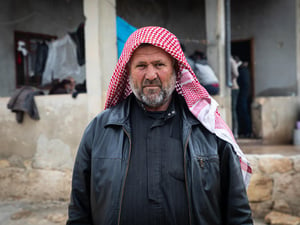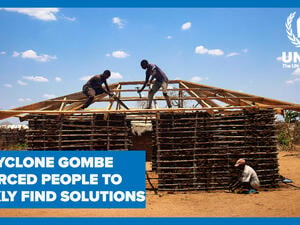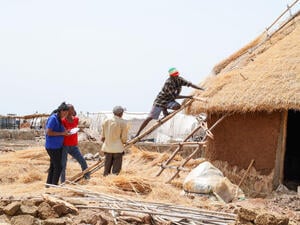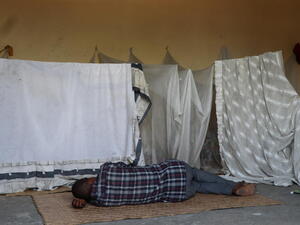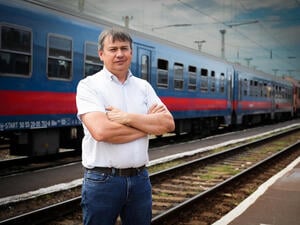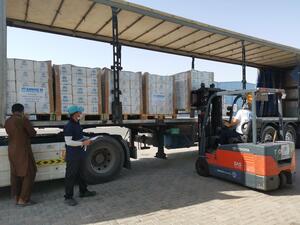Togo outflow slows; aid workers rush to shelter new arrivals
Togo outflow slows; aid workers rush to shelter new arrivals
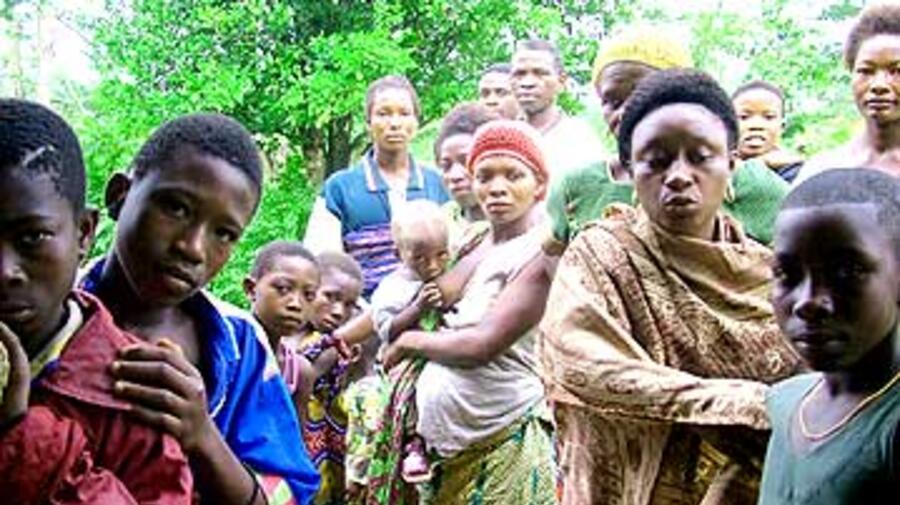
Virtually all the Togolese refugees in Ghana are living with relatives and friends.
COTONOU, Benin, May 6 (UNHCR) - The flow of refugees from Togo has slowed in recent days, but the pressure is mounting for aid workers to build more shelters and improve living conditions for the new arrivals in neighbouring Benin and Ghana amid the rainy season.
Over the last two days, the number of Togolese fleeing post-election uncertainties to Benin and Ghana has dropped sharply. A combined total of some 22,600 refugees have now been registered in the two countries since the outflow began on April 26 with the announcement of Togo's election results. The refugee number includes some 12,000 in Benin and 10,681 in Ghana.
Yesterday saw 355 new arrivals at Hilakondji in Benin, and 218 arrivals at Aflao in Ghana. As of last night, the major border crossing points were reported calm and quiet.
In Benin, 67 percent of the Togolese refugees are staying with host families, while nearly 3,500 others have been transferred to the camps of Come (1,344) and Lokossa (2,146) in the south-west. Come camp is full, while Lokossa camp is still receiving an average of 350 refugees every day.
UNHCR and its partners are working long hours to expand Lokossa camp to accommodate 5,000 refugees, or even more if necessary. The camp is built on a 40-acre site with uneven terrain and dense forests with 7-metre-tall palm trees. UNHCR staff, Red Cross volunteers, boy scouts, engineers and other aid workers have been working long hours to clear the land before bulldozers level the ground so that tents can be set up for the new arrivals.
"It's so demanding," said UNHCR field officer Medesse Bossede, who has been working 15-hour days for the past 10 days. "Refugees put pressure on us to house them and we in turn push ourselves to the limit to get the job done, especially because the influx coincided with the rainy season." He added that it is extremely gratifying to see the refugees sheltered.
However, in the past two days, heavy rains have turned the ground into mud and made it even harder to work fast. The transport of supplies is also more difficult as the rains have washed away parts of the red earth, making the road leading to the camp slippery and full of large potholes.
To make up for the lost time, the teams are stretching working hours beyond sunset. Electricity has been brought to the site, both to give light to refugees and to allow work to continue in the evenings. As more land gets cleared, some tents which had been built too close to one another, due to lack of available space, are now being dismantled and placed further apart.
Improvements in both Lokossa and Come camps are continuing with the installation of more latrines, showers and water taps. Measures are also being taken to make recreational space for the children, who make up half of the refugee population.
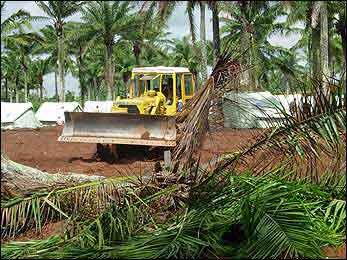
A bulldozer clearing the forest and levelling the ground to build more tents at Lokossa camp in Benin.
A convoy of 10 UNHCR trucks carrying supplies for up to 5,000 people arrived in Benin from Ghana on Wednesday. Eight of the trucks were being unloaded yesterday at a warehouse near Lokossa camp. The aid supplies, from UNHCR's regional warehouse in Ghana, included tents, blankets, plastic sheeting, mats, jerry cans, kitchen sets and soap.
The UN World Food Programme has provided each of the two camps with two metric tons of maize, a metric ton of beans and the same quantity of oil. The food is being distributed and now most refugees can cook their own meals for the first time since they arrived in Benin.
UNHCR is opening a field office in Lokossa today so it can better manage the sprawling camp. This will allow the agency's staff to be posted there, instead of making the 106-km trip between Cotonou and the camp every day.
The government of Benin has also posted a permanent representative in Come who will be responsible for camp management, including security issues, which have been a concern of some refugees. They fear the camp's proximity to Togo could make them vulnerable.
An additional 300 refugees are staying at Benin's Hilakondji border in church grounds. Some 600 refugees are staying with relatives in Cotonou, but many have requested assistance especially in the area of education. UNHCR estimates that at least a third of the Togolese refugees in Cotonou were attending school when they fled the country. Some are preparing for exams and UNHCR is discussing with education authorities in Benin on how best to help them.
In Ghana, virtually all refugees have found shelter and basic assistance from family and friends.
By Fatoumata Kaba in Cotonou, Benin

